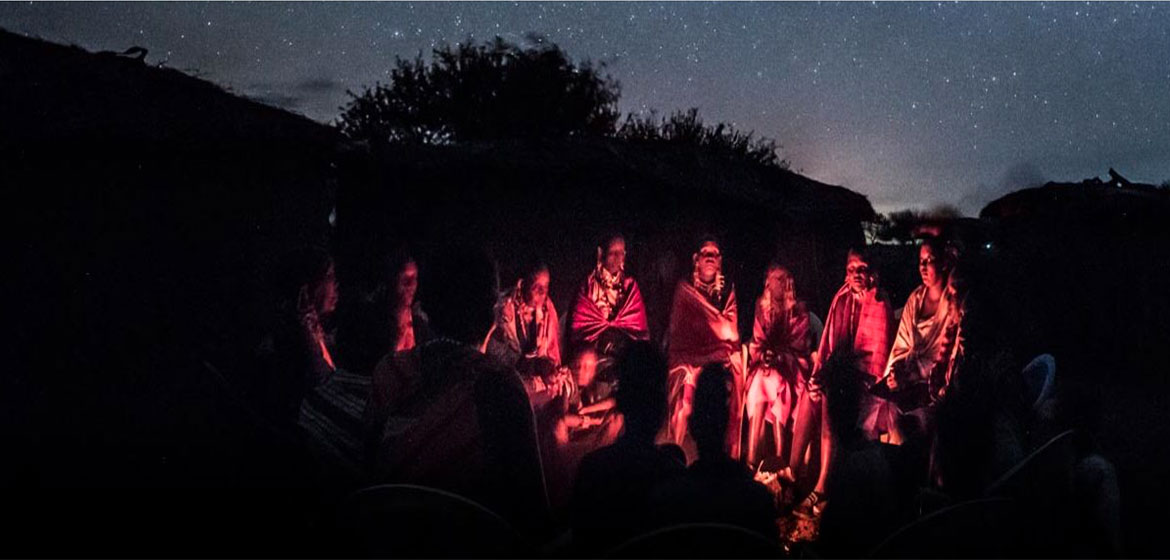by Mongabay.com
- Researchers say they found that amphibian, bird, mammal, and reptile abundance in Australia, Brazil, and Canada is highest on lands managed or co-managed by indigenous communities — higher even than on protected areas like parks and wildlife reserves, which were found to have the second highest levels of biodiversity.
- Both indigenous-managed lands and protected areas harbored more biodiversity than unprotected areas included in the study that the researchers selected at random. The researchers also determined that the size and geographical location of any particular area had no effect on levels of species diversity, suggesting that it’s the land-management practices of indigenous communities that are conserving biodiversity.
- The researchers said their results demonstrate the importance of expanding the boundaries of traditional conservation strategies, which frequently rely on establishing protected areas to conserve critical habitat for biodiversity.
New research bolsters the case for indigenous-led land management as a crucial conservation solution.
The study, last month, focused on land and species data from more than 15,000 distinct geographical regions in Australia, Brazil, and Canada. After analyzing the data, the researchers behind the study say they found that amphibian, bird, mammal, and reptile abundance is highest on lands managed or co-managed by indigenous communities — higher even than on protected areas like parks and wildlife reserves, which were found to have the second highest levels of biodiversity.
Both indigenous-managed lands and protected areas harbored more biodiversity than unprotected areas included in the study that the researchers selected at random. The researchers also determined that the size and geographical location of any particular area had no effect on levels of species diversity.
“This suggests that it’s the land-management practices of many Indigenous communities that are keeping species numbers high,” Richard Schuster, who led the research while at the University of British Columbia (UBC) and is now a postdoctoral fellow at Carleton University in Canada, said in a . He added that a key takeaway of the study is that “Going forward, collaborating with Indigenous land stewards will likely be essential in ensuring that species survive and thrive.”
Schuster and co-authors say that their study is the first to look at land management practices and their impact on biodiversity at such a large geographic scale. “We looked at three countries with very different climates and species, to see if the pattern held true across these different regions — and it did,” study co-author Ryan Germain, a postdoctoral fellow at Cornell University in the US, said in a . “From frogs and songbirds right up to large mammals like grizzly bears, jaguars and kangaroos, biodiversity was richest in Indigenous-managed lands.”
UBC forestry professor Peter Arcese, who served as senior author for the study, said that the results demonstrate the importance of expanding the boundaries of traditional conservation strategies, which frequently rely on establishing protected areas to conserve critical habitat for biodiversity.
A found that the amount of land afforded some sort of protected status has roughly doubled globally since the 1992 Earth Summit in Rio de Janeiro, Brazil. More than 202,000 protected areas now cover nearly 15 percent of the world’s terrestrial areas, according to the study, but one-third of those protected areas are facing “intense human pressure.” Given these findings, conservationists have argued that , as well.
Yet many protected areas established in the past intentionally excluded indigenous peoples from using the land they had relied on for generations. This was not only harmful to those local indigenous communities, it also meant that the protected areas frequently failed to achieve their conservation goals, Arcese and team noted.
“Protected areas are a cornerstone of biodiversity conservation globally, but current levels of protection will be insufficient to halt the planetary extinction crisis,” Arcese said. “We must manage a larger fraction of world’s area in ways that protect species and leads to positive outcomes for people and the species they’ve relied on for millennia.”
Another released last year determined that indigenous peoples have ownership and use or management rights over more than one-fourth of Earth’s land surface (close to 38 million square kilometers or about 14.6 million square miles) across 87 countries. The study, which mapped all of the terrestrial lands managed or owned by indigenous peoples across the globe, also found that about 40 percent of all terrestrial protected areas on Earth overlap with indigenous-controlled land — and that about , more than double the proportion of intactness found on other types of land.
“Indigenous-managed lands represent an important repository of biodiversity in three of the largest countries on Earth, and Indigenous peoples currently manage or have tenure to roughly one-quarter of the planet’s land area,” Nick Reo, an associate professor at Dartmouth College in the US and co-author of the present study, said in a .
“In light of this, collaborating with Indigenous governments, communities and organizations can help to conserve biodiversity as well as support Indigenous rights to land, sustainable resource use and well-being.”
Source:
Related to SDG 13: Climate action and SDG 10: Reduced inequalities



